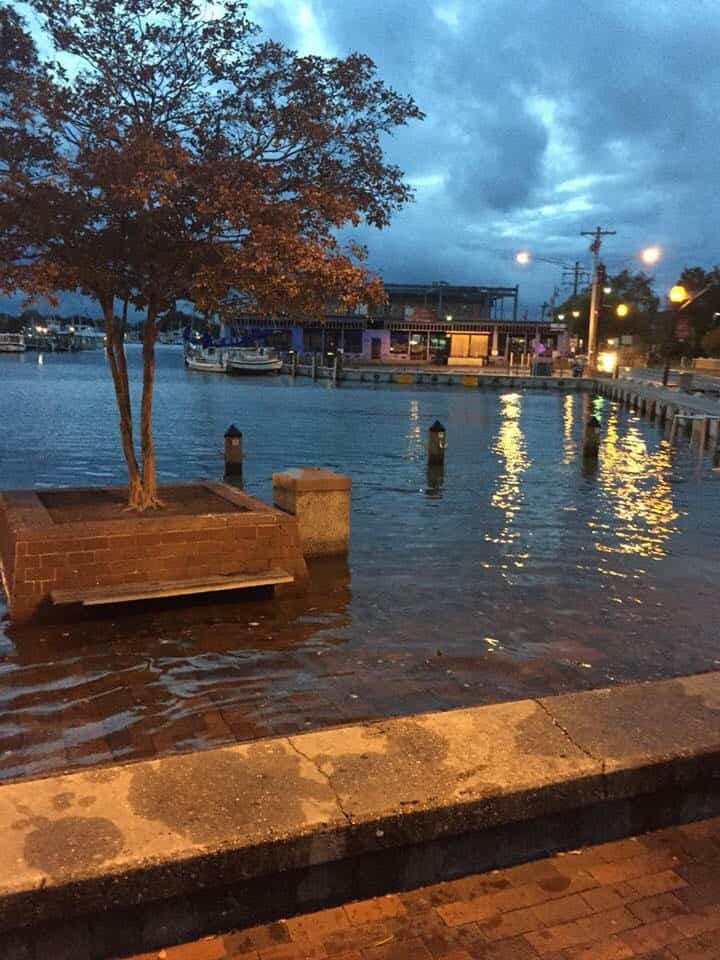Historians, scientists, and climate change experts from around North America and Europe descended on Annapolis this week for the Keeping History Above Water conference to examine the danger of sea level rise.
Annapolis OEMThe four-day conference from October 31-November 1 highlights the significant impact of water levels that creep higher year by year.
High-tide coastal flooding, or “nuisance flooding,” leads to public inconveniences like road closures, according to the National Oceanic and Atmospheric Administration (NOAA). It has been an ongoing problem at the Annapolis City Dock. With the issue right under our noses, Annapolis is the perfect backdrop to warn about the future.
As sea levels rise, nuisance flooding will get more frequent, according to NOAA oceanographer William Sweet, who now lives in Annapolis to be closer to an at-risk location.
Scientists estimate that forty years from now, Annapolis will see nuisance flooding daily.
Sweet is just one of the speakers presenting at this week’s sold-out conference, which also includes sea level rise experts from the UK and the Netherlands.
The public was invited to the first day of the conference, which demonstrated how the Ship House, one of Annapolis’ historic landmarks, will be partly underwater by the year 2100. By that year, local experts say, sea level will be four feet higher. In low-lying Annapolis, that would change the landscape significantly. In addition to a couple hundred conference attendees, several hundred people from the community came out to hear the experts speak.
It’s the second year for the Keeping History Above Water conference, and the first in Annapolis. The conference chose Annapolis not just because it’s a community vulnerable to sea level rise, but also because of the city’s plans to adapt to the rising water. The city’s Weather it Together program aims to minimize the risk of flooding in Annapolis, and protect the historic seaport’s many landmarks.
The message from the conference going forward: climate change and sea level rise are inevitable, but it’s how cities like Annapolis adapt to the changes that will allow them to survive.




